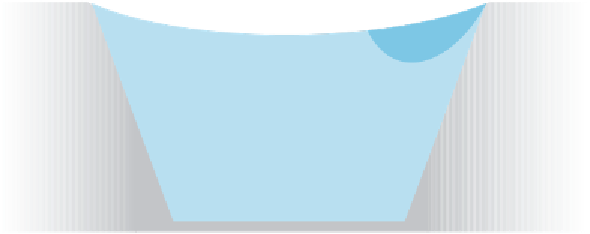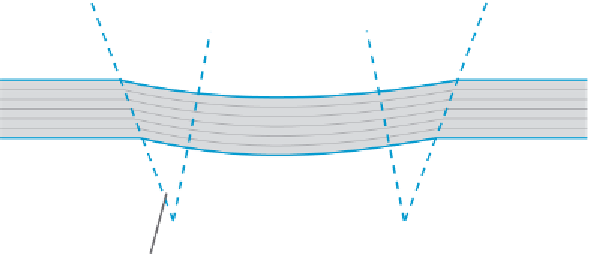Environmental Engineering Reference
In-Depth Information
disrupted; irrigation and drainage systems may be disrupted. In developed areas, subsid-
ence has the potential to affect buildings, roads, and l ow lines. However in remote areas,
increasingly the location of new metalliferous mines, such structural risks are usually absent.
Subsidence can contribute to increased ini ltration to underground mines, potentially result-
ing in the l ooding of underground openings, increased acid rock drainage, and a need
for greater water treatment capacity in instances where mine drainage must be treated.
Groundwater l ow may be interrupted or accelerated as impermeable strata deform, crack
and collapse, l ooding mine voids. Impacts to groundwater also include changes in water
quality and regional l ow patterns (with subsequent impacts on groundwater recharge).
Occasionally a cave-in is felt; it may be powerful enough to be measured by seismographs.
On August 6, 2007 the University of Utah seismograph station recorded a seismic event of
magnitude 3.9. Scientists later realized a powerful collapse at the nearby Genval coal mine
at a depth of several hundred metres had caused the disturbance. Since the mid 1990s,
at least half dozen other mine collapses in the USA alone have caused similar seismic
events, including a 1995 cave-in in southwestern Wyoming that caused readings as high as
5.4 on the Richter scale.
FIGURE 13.3
Land Subsidence Illustrated
Occasionally a cave-in is felt; it may be
powerful enough to be measured by
seismographs.
Photo: Geological Survey of Northern Ireland (
www.
dsi.ie
) and Department of Enterprise, Trade and
Investment
Zone of Increased
Permeability
Surface Cracks due
to Subsidence
Original Surface
Subsidence Trough
Zone of
Surface
Cracking
Any Rock
Type
Aquiclude
Zone
Fractured
Zone
Any Rock
Type
Caved Zone
Coal Seam
Coal Seam
Mining Cracks
























Search WWH ::

Custom Search